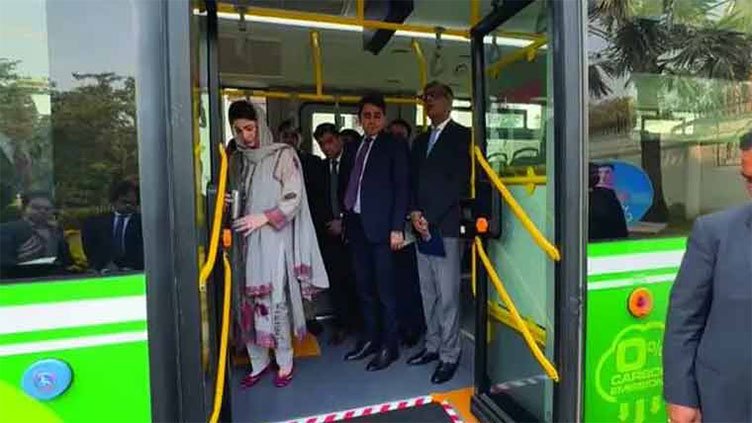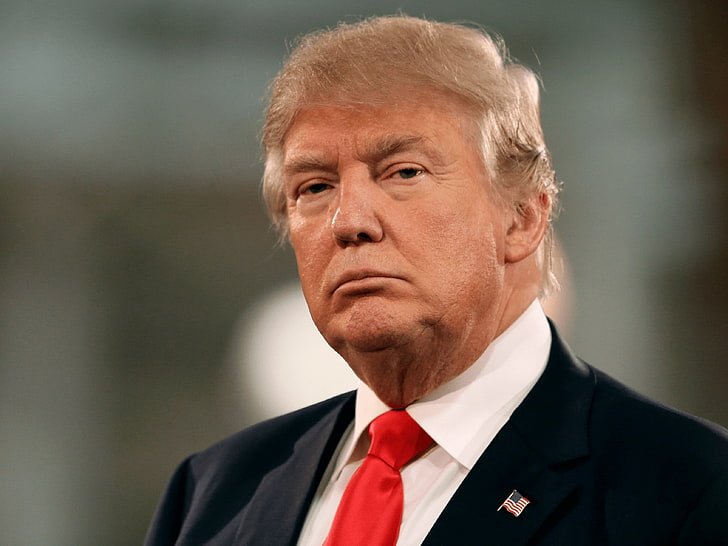Punjab’s Green Revolution in Transport: A Vision of Equity and Sustainability
Punjab’s Chief Minister, Maryam Nawaz Sharif, recently convened a high-level meeting with officials from the Transport Department to assess the advancement of critical transport projects across the province, with particular emphasis on the deployment of electric buses. The session highlighted a fundamental recalibration in Punjab’s public transport ethos — a move decisively tilted toward inclusive development rather than urban centrism.
The Core Message: Breaking the “Big City Only” Mindset
Shaking up longstanding patterns, Maryam Nawaz underlined the necessity of ensuring that remote and underdeveloped districts receive equal priority in the distribution of modern transport assets. She was unequivocal:
“The culture of giving every new facility to big cities must be changed.”
This statement encapsulates a rising political awareness — that true progress lies in balanced, equitable infrastructure growth that bridges regional disparities rather than widening them.
Phase One: Electrifying the Forgotten Districts
In the first phase of the electric bus rollout, 240 buses will be dispatched across 24 underdeveloped districts of Punjab. This initiative is tailor-made to uplift rural yet overlooked locales — a fundamental deviation from past practice. These buses represent the government’s commitment to serve all citizens, regardless of geography.
Importance of this push:
-
Social Equity: Aligns with national goals of balanced development.
-
Economic Boost: Enhanced transport stimulates local economies and connectivity.
-
Environmental Impact: Rural emissions, though often overlooked, have cumulative environmental and health implications; this initiative signals a proactive stance toward reducing them.
Major Cities: Rolling Out the Electric Fleet
Following the initial rural phase, Punjab plans a staggered, expansive rollout in urban hubs:
-
August–October 2025: 500 electric buses to be deployed in Lahore, Faisalabad, Bahawalpur, Multan, and Rawalpindi.
-
November–December 2025: A further 600 buses will grace the roads across the province.
-
Under the Punjab Clean Air Programme, an additional 400 e-buses are earmarked for Lahore, Sheikhupura, Nankana Sahib, and Kasur.
This translates to 1,740 electric buses by year-end, a significant upsurge that positions Punjab at the vanguard of sustainable transport innovation in Pakistan.
Why This Scale Matters
-
Tour-de-force in Fleet Modernisation: A bus fleet of this size, outfitted with GPS, CCTV, USB chargers, and disability access, signals a bold departure from diesel-dependent systems.
-
Air Quality Impact: With Lahore repeatedly ranking among the world’s most polluted cities, electric buses offer an immediate alternative to curb smog and urban emissions.
-
Public Health Benefits: Cleaner transport leads to lower respiratory illness rates — a vital public health milestone.
Digging Deeper: Technical & Operational Provisions
1. Energy Infrastructure & Charging
Though not fully detailed in the meeting, earlier directives on electric bus projects highlight aggressive charging infrastructure planning. In Lahore, for instance, a solar-powered depot in Green Town will generate 1.2 MW of clean energy for the e-fleet Similar green depots are planned in Multan, Rawalpindi, and Faisalabad. These facilities will be foundational to the buses’ effectiveness.
2. Inclusive Fare Policy
Affordability will be key. Early phases envisioned a flat fare of Rs. 20, with free rides for students, seniors, and persons with disabilities . Maintaining such inclusive pricing could ensure high public uptake and increased trust in public transport.
3. Smart Fleet Management
Plans include GPS-enabled buses, digital ticketing systems, and real-time tracking — factors that can raise efficiency, lower wait times, and inform enforcement or route optimization strategies.
The Gujranwala BRT: A Cornerstone Urban Mobility Project
The meeting also registered significant progress on the Gujranwala Bus Rapid Transit (BRT) project — a flagship urban mobility initiative designed for swift, high-capacity public transit.
Route & Infrastructure Highlights
-
Length: 22 kilometers, stretching from Rahwali to Eminabad.
-
Stations: 28 modern stops, full of amenities.
-
Service: Buses running every 8 minutes in both directions.
-
Support: Landmarks include four electric bus depots, backed by smart traffic management systems. eeder Network: Bridging Gaps
To maximize reach, 80 feeder buses will serve city neighborhoods and suburban areas, linking seamlessly with the core BRT line. This integration ensures last-mile connectivity, essential for a successful transit system.
Future-Proofing the Network
Officials are exploring a possible extension to Ghakhar Mandi and deploying smart traffic signals to give priority lanes to BRT vehicles — critical for maintaining schedule reliability and reducing trip times.
Boosting Faisalabad’s Urban Transit
While electric bus deployment grabs headlines, the Transport Department is equally focused on manual mode mass transit systems in other cities.
Faisalabad’s Red & Orange Lines
-
Red Line: A 23.4 km route with 24 stations, expected to ferry 185,000 commuters daily.
-
Orange Line: Spanning 29 km with 21 stations, projected to carry 111,000 passengers daily.
-
Recent Expansion: The route now extends from FIEDMC to Salami Chowk, per the CM’s directives.
With dedicated bus lanes and intelligent transit systems, Fazialabad is being reshaped into a commuter-friendly city, reducing congestion and improving efficiency.
Broader Vision: Punjab Clean Air Programme
These transport developments are elements of the broader Punjab Clean Air Programme, the province’s flagship environmental initiative. Objectives include:
-
Large-scale electrification of public transport.
-
Reduction in emissions-related diseases.
-
Deployment of clean-energy infrastructure, including the solar depots.
-
Strategic urban planning to reduce dependency on personal vehicles.
A World Bank soft loan of $300 million has reportedly been approved to support this program demonstrating both local commitment and global interest.
A New Era of Equity: Urban–Rural Convergence
Punjab’s strategy clearly signals a shift:
-
Rural Upliftment: Electric buses are not paraded through big city streets first — they are dispatched to districts previously left behind.
-
Urban Modernisation: Simultaneously, existing metropolis-grade systems are being upgraded with high-tech solutions.
-
No Citizen Left Behind: The CM’s rallying cry — “In this journey of progress, every citizen must have equal opportunities and access to facilities.” — indicates a sweeping blueprint for developmental justice.
Implementation Challenges & Mitigation Strategies
Large-scale infrastructure efforts often face real-world hurdles. Punjab appears to be addressing several potential concerns:
1. Route Viability Studies
Buses are being assigned based on commuter demand studies, not assumptions. This guardrail ensures systems are used to their full potential, echoing the CM’s insistence that “e‑bus routes should be determined based on public commuting needs.”
2. Financial Accountability
With solar depots and fleet technology, capital investment is heavy. But long-term reductions in diesel usage and pollution, combined with farebox revenue, are projected to balance costs. World Bank scrutiny reinforces transparency.
3. Maintenance Infrastructure
Depots and charging stations are being built in tandem with the fleet, a clear attempt to avoid neglected vehicles and service declines that often afflict nascent programs.
4. Training & Local Capacity Building
Although not extensively detailed, training drivers, technicians, and managers will be crucial. A well-trained workforce ensures system resilience and less reliance on external vendors.
What This Means for the People of Punjab
A. Improved Quality of Life
-
Shorter commutes with fewer delays and better service.
-
Safer journeys, courtesy of CCTV, anti-slip flooring, and equitable access features.
-
Cleaner air, with real impact on public health and well-being.
B. Economic Inclusion
-
Rural districts gain better access to jobs, services, and markets.
-
Cities become more accessible, reducing transport-related work absences.
-
Export and investment potential could receive a boost — efficient transport is a magnet for business.
C. Environmental Responsibility
-
A radical cut in greenhouse gas emissions per bus — shifting from diesel to electric.
-
Renewable energy usage in depots cuts the grid’s burden.
-
Public transport adoption reduces private vehicle dependency, easing congestion and emissions.
Monitoring Progress: KPIs and Timelines
The meeting set concrete timelines for accountability:
-
June 2025: Completion of the 380 buses procurement for Lahore and Gujranwala.
-
August–October 2025: Deployment of 500 buses in five major cities.
-
November–December 2025: Province-wide roll-out of 600 buses.
-
Ongoing: Operationalizing Gujranwala BRT, with service beginning as feeder links and stations come online, and progress tracking of Faisalabad Red & Orange Lines.
This structured approach ensures focused delivery and mitigates delays.
Weather Alerts Issued for Heavy Rain & Storms Across Pakistan for Next 48 Hours powerfull
Read This Article
Final Thoughts: A Model for Progressive Governance
Punjab’s transport transformation — steered by CM Maryam Nawaz Sharif — signals a bold stride toward inclusive, sustainable urban-rural integration. By refusing to prioritize big cities at the cost of marginalized areas, the government has crafted a blueprint for equitable growth.
Key takeaways include:
-
Inclusivity as Policy: No district is secondary — that’s a marked shift.
-
Smart Infrastructure: Electric buses coupled with solar depots show forward thinking.
-
Data-Driven Planning: Commuter-informed route design adds efficiency.
-
Scalability & Long-Term Focus: A year-end target for nearly 1,750 buses — ambitious and impactful — sets Punjab on a path for transformative change.
In Summary
Punjab’s latest transport initiative, marked by:
-
240 e‑buses for underdeveloped districts,
-
1,500+ buses across cities,
-
A national-quality BRT in Gujranwala,
-
Smart transit networks in Faisalabad,
is a masterstroke in inclusive, sustainable governance. This synchronized approach addresses equity, environmental responsibility, infrastructure resilience, and public health — backed by global funding and local political will. If executed with diligence, this could serve as a national template for clean, equitable, modern public transport.
Punjab’s Green Revolution in Transport: A Vision of Equity and Sustainability
Punjab’s Chief Minister, Maryam Nawaz Sharif, recently convened a high-level meeting with officials from the Transport Department to assess the advancement of critical transport projects across the province, with particular emphasis on the deployment of electric buses. The session highlighted a fundamental recalibration in Punjab’s public transport ethos — a move decisively tilted toward inclusive development rather than urban centrism.
The Core Message: Breaking the “Big City Only” Mindset
Shaking up longstanding patterns, Maryam Nawaz underlined the necessity of ensuring that remote and underdeveloped districts receive equal priority in the distribution of modern transport assets. She was unequivocal:
“The culture of giving every new facility to big cities must be changed.”
This statement encapsulates a rising political awareness — that true progress lies in balanced, equitable infrastructure growth that bridges regional disparities rather than widening them.
Phase One: Electrifying the Forgotten Districts
In the first phase of the electric bus rollout, 240 buses will be dispatched across 24 underdeveloped districts of Punjab. This initiative is tailor-made to uplift rural yet overlooked locales — a fundamental deviation from past practice. These buses represent the government’s commitment to serve all citizens, regardless of geography.
Importance of this push:
-
Social Equity: Aligns with national goals of balanced development.
-
Economic Boost: Enhanced transport stimulates local economies and connectivity.
-
Environmental Impact: Rural emissions, though often overlooked, have cumulative environmental and health implications; this initiative signals a proactive stance toward reducing them.
Major Cities: Rolling Out the Electric Fleet
Following the initial rural phase, Punjab plans a staggered, expansive rollout in urban hubs:
-
August–October 2025: 500 electric buses to be deployed in Lahore, Faisalabad, Bahawalpur, Multan, and Rawalpindi.
-
November–December 2025: A further 600 buses will grace the roads across the province.
-
Under the Punjab Clean Air Programme, an additional 400 e-buses are earmarked for Lahore, Sheikhupura, Nankana Sahib, and Kasur.
This translates to 1,740 electric buses by year-end, a significant upsurge that positions Punjab at the vanguard of sustainable transport innovation in Pakistan.
Why This Scale Matters
-
Tour-de-force in Fleet Modernisation: A bus fleet of this size, outfitted with GPS, CCTV, USB chargers, and disability access, signals a bold departure from diesel-dependent systems.
-
Air Quality Impact: With Lahore repeatedly ranking among the world’s most polluted cities, electric buses offer an immediate alternative to curb smog and urban emissions.
-
Public Health Benefits: Cleaner transport leads to lower respiratory illness rates — a vital public health milestone.
Digging Deeper: Technical & Operational Provisions
1. Energy Infrastructure & Charging
Though not fully detailed in the meeting, earlier directives on electric bus projects highlight aggressive charging infrastructure planning. In Lahore, for instance, a solar-powered depot in Green Town will generate 1.2 MW of clean energy for the e-fleet Similar green depots are planned in Multan, Rawalpindi, and Faisalabad. These facilities will be foundational to the buses’ effectiveness.
2. Inclusive Fare Policy
Affordability will be key. Early phases envisioned a flat fare of Rs. 20, with free rides for students, seniors, and persons with disabilities . Maintaining such inclusive pricing could ensure high public uptake and increased trust in public transport.
3. Smart Fleet Management
Plans include GPS-enabled buses, digital ticketing systems, and real-time tracking — factors that can raise efficiency, lower wait times, and inform enforcement or route optimization strategies.
The Gujranwala BRT: A Cornerstone Urban Mobility Project
The meeting also registered significant progress on the Gujranwala Bus Rapid Transit (BRT) project — a flagship urban mobility initiative designed for swift, high-capacity public transit.
Route & Infrastructure Highlights
-
Length: 22 kilometers, stretching from Rahwali to Eminabad.
-
Stations: 28 modern stops, full of amenities.
-
Service: Buses running every 8 minutes in both directions.
-
Support: Landmarks include four electric bus depots, backed by smart traffic management systems. eeder Network: Bridging Gaps
To maximize reach, 80 feeder buses will serve city neighborhoods and suburban areas, linking seamlessly with the core BRT line. This integration ensures last-mile connectivity, essential for a successful transit system. Electric Buses.
Future-Proofing the Network
Officials are exploring a possible extension to Ghakhar Mandi and deploying smart traffic signals to give priority lanes to BRT vehicles — critical for maintaining schedule reliability and reducing trip times Electric Buses.
Boosting Faisalabad’s Urban Transit
While electric bus deployment grabs headlines, the Transport Department is equally focused on manual mode mass transit systems in other cities Electric Buses.
Faisalabad’s Red & Orange Lines
-
Red Line: A 23.4 km route with 24 stations, expected to ferry 185,000 commuters daily.
-
Orange Line: Spanning 29 km with 21 stations, projected to carry 111,000 passengers daily.
-
Recent Expansion: The route now extends from FIEDMC to Salami Chowk, per the CM’s directives. Electric Buses.
With dedicated bus lanes and intelligent transit systems, Fazialabad is being reshaped into a commuter-friendly city, reducing congestion and improving efficiency Electric Buses.
Broader Vision: Punjab Clean Air Programme
These transport developments are elements of the broader Punjab Clean Air Programme, the province’s flagship environmental initiative. Objectives include:
-
Large-scale electrification of public transport Electric Buses.
-
Reduction in emissions-related diseases Electric Buses.
-
Deployment of clean-energy infrastructure, including the solar depotsm Electric Buses.
-
Strategic urban planning to reduce dependency on personal vehicles Electric Buses.
A World Bank soft loan of $300 million has reportedly been approved to support this program demonstrating both local commitment and global interest Electric Buses.
A New Era of Equity: Urban–Rural Convergence
Punjab’s strategy clearly signals a shift:
-
Rural Upliftment: Electric buses are not paraded through big city streets first — they are dispatched to districts previously left behind Electric Buses.
-
Urban Modernisation: Simultaneously, existing metropolis-grade systems are being upgraded with high-tech solutions Electric Buses.
-
No Citizen Left Behind: The CM’s rallying cry — “In this journey of progress, every citizen must have equal opportunities and access to facilities.” — indicates a sweeping blueprint for developmental justice. Electric Buses.
Implementation Challenges & Mitigation Strategies
Large-scale infrastructure efforts often face real-world hurdles. Punjab appears to be addressing several potential concerns Electric Buses.
1. Route Viability Studies
Buses are being assigned based on commuter demand studies, not assumptions. This guardrail ensures systems are used to their full potential, echoing the CM’s insistence that “e‑bus routes should be determined based on public commuting needs.”
2. Financial Accountability
With solar depots and fleet technology, capital investment is heavy. But long-term reductions in diesel usage and pollution, combined with farebox revenue, are projected to balance costs. World Bank scrutiny reinforces transparency. Electric Buses.
3. Maintenance Infrastructure
Depots and charging stations are being built in tandem with the fleet, a clear attempt to avoid neglected vehicles and service declines that often afflict nascent programs Electric Buses.
4. Training & Local Capacity Building
Although not extensively detailed, training drivers, technicians, and managers will be crucial. A well-trained workforce ensures system resilience and less reliance on external vendors Electric Buses.
What This Means for the People of Punjab
A. Improved Quality of Life
-
Shorter commutes with fewer delays and better service.
-
Safer journeys, courtesy of CCTV, anti-slip flooring, and equitable access features.
-
Cleaner air, with real impact on public health and well-being Electric Buses.
B. Economic Inclusion
-
Rural districts gain better access to jobs, services, and markets Electric Buses.
-
Cities become more accessible, reducing transport-related work absences Electric Buses.
-
Export and investment potential could receive a boost — efficient transport is a magnet for business Electric Buses.
C. Environmental Responsibility
-
A radical cut in greenhouse gas emissions per bus — shifting from diesel to electric Electric Buses.
-
Renewable energy usage in depots cuts the grid’s burden Electric Buses.
-
Public transport adoption reduces private vehicle dependency, easing congestion and emissions Electric Buses.
Monitoring Progress: KPIs and Timelines
The meeting set concrete timelines for accountability:
-
June 2025: Completion of the 380 buses procurement for Lahore and Gujranwala Electric Buses.
-
August–October 2025: Deployment of 500 buses in five major cities Electric Buses.
-
November–December 2025: Province-wide roll-out of 600 buses Electric Buses.
-
Ongoing: Operationalizing Gujranwala BRT, with service beginning as feeder links and stations come online, and progress tracking of Faisalabad Red & Orange Lines Electric Buses.
This structured approach ensures focused delivery and mitigates delays.
Final Thoughts: A Model for Progressive Governance
Punjab’s transport transformation — steered by CM Maryam Nawaz Sharif — signals a bold stride toward inclusive, sustainable urban-rural integration. By refusing to prioritize big cities at the cost of marginalized areas, the government has crafted a blueprint for equitable growth Electric Buses.
Key takeaways include:
-
Inclusivity as Policy: No district is secondary — that’s a marked shift Electric Buses.
-
Smart Infrastructure: Electric buses coupled with solar depots show forward thinking Electric Buses.
-
Data-Driven Planning: Commuter-informed route design adds efficiency Electric Buses.
-
Scalability & Long-Term Focus: A year-end target for nearly 1,750 buses — ambitious and impactful — sets Punjab on a path for transformative change Electric Buses.
In Summary
Punjab’s latest transport initiative, marked by:
-
240 e‑buses for underdeveloped districts,
-
1,500+ buses across cities,
-
A national-quality BRT in Gujranwala,
-
Smart transit networks in Faisalabad,
is a masterstroke in inclusive, sustainable governance. This synchronized approach addresses equity, environmental responsibility, infrastructure resilience, and public health — backed by global funding and local political will. If executed with diligence, this could serve as a national template for clean, equitable, modern public transport.




